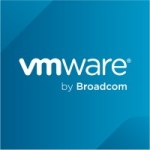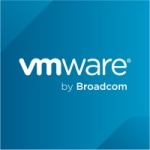What is our primary use case?
We are providing a platform as a service to our customers, where we do not manage their end applications.
We do not manage their end workloads, and we do not have visibility into what applications they are running. We are just providing them with hosting services.
What is most valuable?
We pretty much like everything and we are excited about the seamless capability the EC2 service is offering.
We are mainly using VPC, EC2 instances, a bit of S3 and NAT Gateways, and NAT Instances.
What needs improvement?
The IEM (Infrastructure Event Management) appears to be complicated, specifically cross-account resource permissions. It's a bit complicated to implement and to understand. It requires a lot of heavy lifting.
I am not exactly sure if we implemented it poorly, or it is the same.
Cross-validation and logging-in are areas that need improvement.
There are many variables involved in pricing the service in AWS and overall, the pricing is a bit on the higher side. If the variable in pricing could be simplified, that will also help. Sometimes, we don't use these cost optimization tools.
For how long have I used the solution?
I have been using Amazon AWS for six months.
We just started specifically for this engagement.
Prior to this, I had worked on AWS in my earlier engagements for quite some time.
Buyer's Guide
Amazon AWS
October 2025
Learn what your peers think about Amazon AWS. Get advice and tips from experienced pros sharing their opinions. Updated: October 2025.
872,778 professionals have used our research since 2012.
What do I think about the stability of the solution?
We haven't faced any challenges. It's seamless.
What do I think about the scalability of the solution?
Our company is, I would say, a mid-size company. The customer for whom we are onboarding on AWS, their end-users are also from a mid-size company.
How are customer service and support?
Technical support is good.
Which solution did I use previously and why did I switch?
We are loving this solution so far, and it has certainly reduced the time it takes to stack up new applications.
Also, we are using it for the first time, for this customer, and they too, are loving it. Specifically, the new application launches and testing. I think they're simply having a good time with it.
They experiment with things and tear it off when it is not needed, so they are enjoying it.
I would certainly recommend this to others, for sure.
I would rate Amazon AWS a ten out of ten. Our experience has been great!
How was the initial setup?
The initial setup was straightforward to a large extent.
We are continually migrating services, as per the client's requirement. But I think a mid-size application consisting of 10 servers can take two to three weeks to get onboarded on AWS. This is starting from discovery, planning, migration, and then going live.
What's my experience with pricing, setup cost, and licensing?
I think it should be less expensive. There are many variables involved in pricing, such as data transfer, and several other things.
You have to be very precise, and really detailed, and account for each and every thing. Only then can you do an estimation of how much the application hosting will cost you. You can't afford to be missing a single piece.
There are a lot of pieces that get embedded into costing for each service. So, it's complicated, and I really wish it should have been simpler.
Which deployment model are you using for this solution?
Hybrid Cloud
If public cloud, private cloud, or hybrid cloud, which cloud provider do you use?
Amazon Web Services (AWS)
Disclosure: My company has a business relationship with this vendor other than being a customer. Partner






















